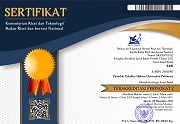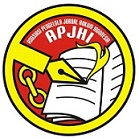Construction of The Distribution of Government Authorities
 )
)
(1) Faculty of Law Pattimura University, Ambon, Indonesia
 Corresponding Author
Corresponding Author
Abstract
Introduction: The concept of dividing government affairs into de-centralization and co-administration has a long history in Indonesian constitutional records.
Purposes of the Research: One of the issues regarding the constitutionality of regional government which has become a space for academic debate after the publication of Law Number 23 of 2014 is related to the concept of dividing government affairs between government structures. Moving on from the perspective of State Administrative Law and Administrative Law, the analysis will be directed at the parameters used to construct the division of authority between government structures based on executive power or based on the authority established by the constitution.
Methods of the Research: The research method in this paper uses a normative juridical research type, namely the process to find the rule of law, legal principles and legal doctrine to answer the legal issues faced. By using the research approach statue approach (approach of Act), conceptual approach (conceptual approach), philosophical approach and sociological approach as a supporting approach.
Results of the Research: Amendments to the 1945 Constitution, especially the second amendment regarding the concept and pattern of division of government, have indicated that a centralized government will actually be a threat to disintegration, so that strengthening decentralization is not weakening Indonesianness but an effort to strengthen it. In other words, the choice to use the concept of autonomy as broadly as possible should be understood as a way to build a just balance of central and regional power relations. The regional government law has reduced the essence of the concept of deconcentration where previously it was only carried out by the Governor, now it is also carried out by the Regent/Mayor, in such a concept, the problem is how to juxtapose the decentralization method with other methods such as deconcentration and assistance and institutional tasks for the three the principle.
Keywords
DOI
10.47268/sasi.v29i2.1353
Published
2023-04-19
How To Cite
@article{SASI1353,
author = {Hendrik Salmon},
title = {Construction of The Distribution of Government Authorities},
journal = {SASI},
volume = {29},
number = {2},
year = {2023},
keywords = {Construction; Distribution of Authority; Government},
abstract = {Introduction: The concept of dividing government affairs into de-centralization and co-administration has a long history in Indonesian constitutional records.Purposes of the Research: One of the issues regarding the constitutionality of regional government which has become a space for academic debate after the publication of Law Number 23 of 2014 is related to the concept of dividing government affairs between government structures. Moving on from the perspective of State Administrative Law and Administrative Law, the analysis will be directed at the parameters used to construct the division of authority between government structures based on executive power or based on the authority established by the constitution.Methods of the Research: The research method in this paper uses a normative juridical research type, namely the process to find the rule of law, legal principles and legal doctrine to answer the legal issues faced. By using the research approach statue approach (approach of Act), conceptual approach (conceptual approach), philosophical approach and sociological approach as a supporting approach.Results of the Research: Amendments to the 1945 Constitution, especially the second amendment regarding the concept and pattern of division of government, have indicated that a centralized government will actually be a threat to disintegration, so that strengthening decentralization is not weakening Indonesianness but an effort to strengthen it. In other words, the choice to use the concept of autonomy as broadly as possible should be understood as a way to build a just balance of central and regional power relations. The regional government law has reduced the essence of the concept of deconcentration where previously it was only carried out by the Governor, now it is also carried out by the Regent/Mayor, in such a concept, the problem is how to juxtapose the decentralization method with other methods such as deconcentration and assistance and institutional tasks for the three the principle.},
issn = {2614-2961}, pages = {368--380} doi = {10.47268/sasi.v29i2.1353},
url = {https://fhukum.unpatti.ac.id/jurnal/sasi/article/view/1353}
}
Journal Article
Said, Abdul RaufAlauddin. “Pembagian Kewenangan Pemerintah Pusat-Pemerintah Daerah Dalam Otonomi Seluas-Luasnya Menurut UUD 1945.” Fiat Justisia: Jurnal Ilmu Hukum 9, no. 4 (2015): 577–602. https://doi.org/10.25041/fiatjustisia.v9no4.613.
Book
Andi, Gadjong Agussalim. Pemerintahan Daerah-Kajian Politik Dan Hukum. Jakarta: Ghalia Indonesia, 2007.
Fauzan, Encik Muhammad. Hukum Pemerintahan Daerah: Kajian Tentang Hubungan Keuangan Antara Pusat Dan Daerah. Yogyakarta: UII Press, 2006.
Hadjon, Philipus M. Pengantar Hukum Administrasi Indonesia. Yogyakarta: Gadjah Mada University Press, 2019.
Huda, Ni’matul. Pengawasan Pusat Terhadap Daerah Dalam Penyelenggaraan Pemerintahan Daerah. Yogyakarta: UII Press, 2007.
Manan, Bagir. Menyongsong Fajar Otonomi Daerah. Yogyakarta: Pusat Studi hukum Faluktas Hukum Universitas Islam Indonesia, 2004.
Marzuki, Peter Mahmud. Penelitian Hukum,. Jakarta: Kencana, 2016.
Thesis, Web Page, and Others
Hadjon, Philipus M. “Kedudukan Undang-Undang Pemerintahan Daerah Dalam Sistem Pemerintahan.” Seminar Sistem Pemerintahan Indonesia Pasca Amandemen UUD 1945. Surabaya, 2004.
Maksum, Irfan Ridwan. “Perbandingan Sistem Pembagian Urusan Pemerintahan Antara Pemerintah Pusat Dan Daerah Otonom.” n.d.
Cited-By:
1. Analysis of carrageenan quality of Eucheuma cottonii and Eucheuma spinosum seaweed from Bantaeng Regency and its export permit regulations in Indonesia
Mega Fia Lestari, Sri Yusra, Muhammad Ikram Nur Fuady, Herlina Rahim
IOP Conference Series: Earth and Environmental Science vol: 1314 issue: 1 first page: 012002 year: 2024
Type: Journal [View Source]
| Dublin Core | PKP Metadata Items | Metadata for this Document | |
| 1. | Title | Title of document | Construction of The Distribution of Government Authorities |
| 2. | Creator | Author's name, affiliation, country | Hendrik Salmon; Faculty of Law Pattimura University, Ambon; Indonesia |
| 3. | Subject | Discipline(s) | |
| 3. | Subject | Keyword(s) | Construction; Distribution of Authority; Government |
| 4. | Description | Abstract | Introduction: The concept of dividing government affairs into de-centralization and co-administration has a long history in Indonesian constitutional records.Purposes of the Research: One of the issues regarding the constitutionality of regional government which has become a space for academic debate after the publication of Law Number 23 of 2014 is related to the concept of dividing government affairs between government structures. Moving on from the perspective of State Administrative Law and Administrative Law, the analysis will be directed at the parameters used to construct the division of authority between government structures based on executive power or based on the authority established by the constitution.Methods of the Research: The research method in this paper uses a normative juridical research type, namely the process to find the rule of law, legal principles and legal doctrine to answer the legal issues faced. By using the research approach statue approach (approach of Act), conceptual approach (conceptual approach), philosophical approach and sociological approach as a supporting approach.Results of the Research: Amendments to the 1945 Constitution, especially the second amendment regarding the concept and pattern of division of government, have indicated that a centralized government will actually be a threat to disintegration, so that strengthening decentralization is not weakening Indonesianness but an effort to strengthen it. In other words, the choice to use the concept of autonomy as broadly as possible should be understood as a way to build a just balance of central and regional power relations. The regional government law has reduced the essence of the concept of deconcentration where previously it was only carried out by the Governor, now it is also carried out by the Regent/Mayor, in such a concept, the problem is how to juxtapose the decentralization method with other methods such as deconcentration and assistance and institutional tasks for the three the principle. |
| 5. | Publisher | Organizing agency, location | Faculty of Law, Universitas Pattimura |
| 6. | Contributor | Sponsor(s) | Faculty of Law Pattimura University, Ambon |
| 7. | Date | (YYYY-MM-DD) | 2023-04-19 |
| 8. | Type | Status & genre | Peer-reviewed Article |
| 8. | Type | Type | |
| 9. | Format | File format | |
| 10. | Identifier | Uniform Resource Identifier | https://fhukum.unpatti.ac.id/jurnal/sasi/article/view/1353 |
| 10. | Identifier | Digital Object Identifier | 10.47268/sasi.v29i2.1353 |
| 11. | Source | Title; vol., no. (year) | SASI; Volume 29 Issue 2, June 2023 |
| 12. | Language | English=en | en |
| 13. | Relation | Supp. Files | |
| 14. | Coverage | Geo-spatial location, chronological period, research sample (gender, age, etc.) | |
| 15. | Rights | Copyright and permissions | Copyright: Authors who publish their manuscripts in this Journal agree to the following conditions: 1. The copyright in each article belongs to the author, as well as the right to patent. 2. Authors can enter into separate, additional contractual arrangements for the non-exclusive distribution of the journal's published version of the work (e.g., post it to an institutional repository or publish it in a book), with an acknowledgment of its initial publication in this journal. 3. Authors are permitted and encouraged to post their work online (e.g., in institutional repositories or on their website) before and during the submission process, as it can lead to productive exchanges, as well as earlier and greater citation of published work. 4. Authors have the right to self-archiving of the article (Author Self-Archiving Policy)
License: The SASI Journal is disseminated based on the Creative Commons Attribution-NonCommercial 4.0 International license terms. This license allows anyone to copy and redistribute this material in any form or format, compose, modify, and make derivatives of this material for any purpose. You cannot use this material for commercial purposes. You must specify an appropriate name, include a link to the license, and certify that any changes have been made. You can do this in a way that is appropriate but does not imply that the licensor supports you or your use.
|
Copyright (c) 2023 Hendrik Salmon

This work is licensed under a Creative Commons Attribution-NonCommercial 4.0 International License.
Cited-By:
1. Analysis of carrageenan quality of Eucheuma cottonii and Eucheuma spinosum seaweed from Bantaeng Regency and its export permit regulations in Indonesia
Mega Fia Lestari, Sri Yusra, Muhammad Ikram Nur Fuady, Herlina Rahim
IOP Conference Series: Earth and Environmental Science vol: 1314 issue: 1 first page: 012002 year: 2024
Type: Journal [View Source]

 : 1654 times
: 1654 times Download : 1278 times
Download : 1278 times
















